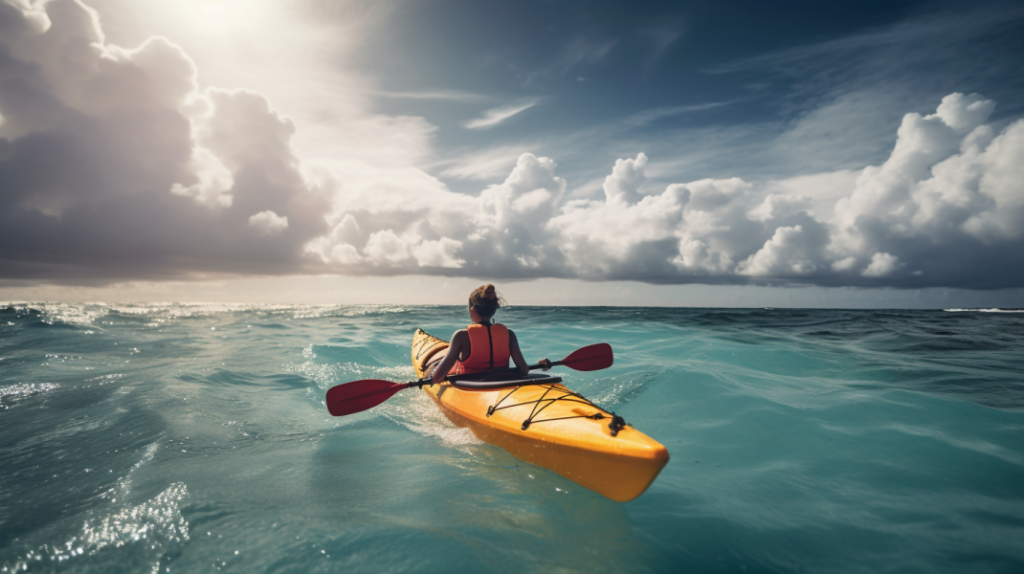Kayaking is an exhilarating outdoor activity that allows enthusiasts to explore the beauty of waterways, from tranquil lakes to roaring rivers. While kayaking can be a thrilling experience, it also involves certain risks that demand attention to safety. Whether you’re a seasoned paddler or a beginner, understanding and adhering to safety essentials is crucial to ensuring a safe and enjoyable kayaking journey. In this article, we will discuss essential safety practices for kayakers, covering gear preparation, water conditions awareness, proper techniques, emergency preparedness, and environmental consciousness.
Gear Preparation
Before embarking on a kayaking adventure, it is essential to ensure that you have the right gear and equipment. These items not only contribute to your comfort but also play a significant role in your safety on the water.
PFD (Personal Flotation Device): Always wear a Coast Guard-approved PFD or life jacket while kayaking. It should fit properly and be suitable for the type of water you’ll be navigating. A PFD can save your life by keeping you afloat if you capsize or encounter other hazards.
Helmet: For kayakers venturing into whitewater or rocky environments, a helmet is a vital safety component. It protects your head from potential impacts on rocks or submerged obstacles.
Kayak: Choose a kayak that suits your skill level and the type of water you plan to paddle. Ensure that it is in good condition, with no cracks or leaks, and always inspect the hull before setting off.
Paddle: Select a paddle that fits your size and paddling style. Check that it’s sturdy and has no cracks or splinters. A broken paddle can lead to dangerous situations on the water.
Spray Skirt: For sit-in kayaks, a spray skirt is essential, as it prevents water from entering the cockpit. Make sure it fits snugly around your waist and cockpit to keep you dry and stable.
Whistle: Always carry a whistle to signal for help in case of an emergency. Three short blasts are recognized as a distress signal on the water.
Water Conditions Awareness
Being aware of the water conditions is vital for kayakers. The state of the water can change rapidly and significantly impact your safety. Here are some important points to consider:
Weather Forecast: Check the weather forecast before heading out and avoid kayaking in adverse weather conditions such as thunderstorms, strong winds, or heavy rainfall.
Water Temperature: Cold water can pose serious risks, even on warm days. Hypothermia can set in quickly, so dress appropriately, and consider wearing a wetsuit or drysuit in cold conditions.
Current and Tides: Understand the flow of the water and how tides might affect your journey. Paddling against strong currents can be exhausting and dangerous.
Hazards: Be aware of potential hazards such as submerged rocks, logs, and strainers (obstacles that allow water to pass through but can trap a kayak). Keep an eye out for changing water levels, which can alter the landscape.
Water Traffic: Pay attention to other watercraft, including motorboats, canoes, and other kayakers. Stay visible and avoid congested areas.
Proper Techniques
Practicing proper kayaking techniques can significantly enhance your safety on the water. Whether you are a beginner or an experienced kayaker, revisiting these techniques is essential:
Paddling Strokes: Learn and practice essential paddling strokes like forward stroke, reverse stroke, sweep stroke, and draw stroke. Efficient paddling helps maintain control and maneuverability.
Bracing: Mastering bracing techniques helps you recover from potential capsizes or maintain stability when encountering waves or currents.
Turning and Maneuvering: Understand how to turn and navigate your kayak effectively, especially in challenging water conditions.
Proper Posture: Sit with proper posture and engage your core muscles while paddling. Good posture improves your balance and reduces the risk of injuries.
Avoid Overreaching: Keep your hands shoulder-width apart on the paddle to avoid overreaching, which can lead to strain or instability.
Emergency Preparedness
Even with proper preparation and caution, emergencies can still occur on the water. Being prepared can make a critical difference in handling such situations:
Self-Rescue Techniques: Learn self-rescue techniques, such as how to re-enter your kayak after capsizing and how to empty water from the cockpit.
Buddy System: Whenever possible, kayak with a buddy or in a group. This ensures that you have immediate assistance in case of an emergency.
Communication: Carry a fully charged cell phone in a waterproof case and know the areas with cellular coverage. Also, consider investing in a marine VHF radio for more reliable communication on the water.
First Aid Kit: Carry a basic first aid kit that includes bandages, antiseptic wipes, pain relievers, and any necessary personal medications.
Know the Area: Familiarize yourself with the area you’ll be kayaking in and have a general understanding of nearby landmarks and potential rescue points.
Environmental Consciousness
As kayakers, it is essential to practice environmental consciousness to preserve the beauty and health of the waterways we love. Here are some guidelines to follow:
Leave No Trace: Carry out all your trash and avoid leaving any trace of your presence on the water. Dispose of waste responsibly.
Wildlife Respect: Observe wildlife from a distance and avoid disturbing their habitats. Do not feed or approach animals closely.
Aquatic Invasive Species: Clean your kayak and gear thoroughly before moving to another water body to prevent the spread of invasive species.
Respect Private Property: Respect private property and avoid trespassing on private land.
Conclusion
Kayaking offers a unique and rewarding way to connect with nature, but safety should always be a top priority. By following these safety essentials for kayakers, you can minimize risks and fully enjoy your paddling experiences. Remember to prepare your gear diligently, stay informed about water conditions, practice proper techniques, be prepared for emergencies, and be mindful of the environment. With these safety measures in mind, you can embark on exciting kayaking adventures with confidence and peace of mind. Happy paddling!

